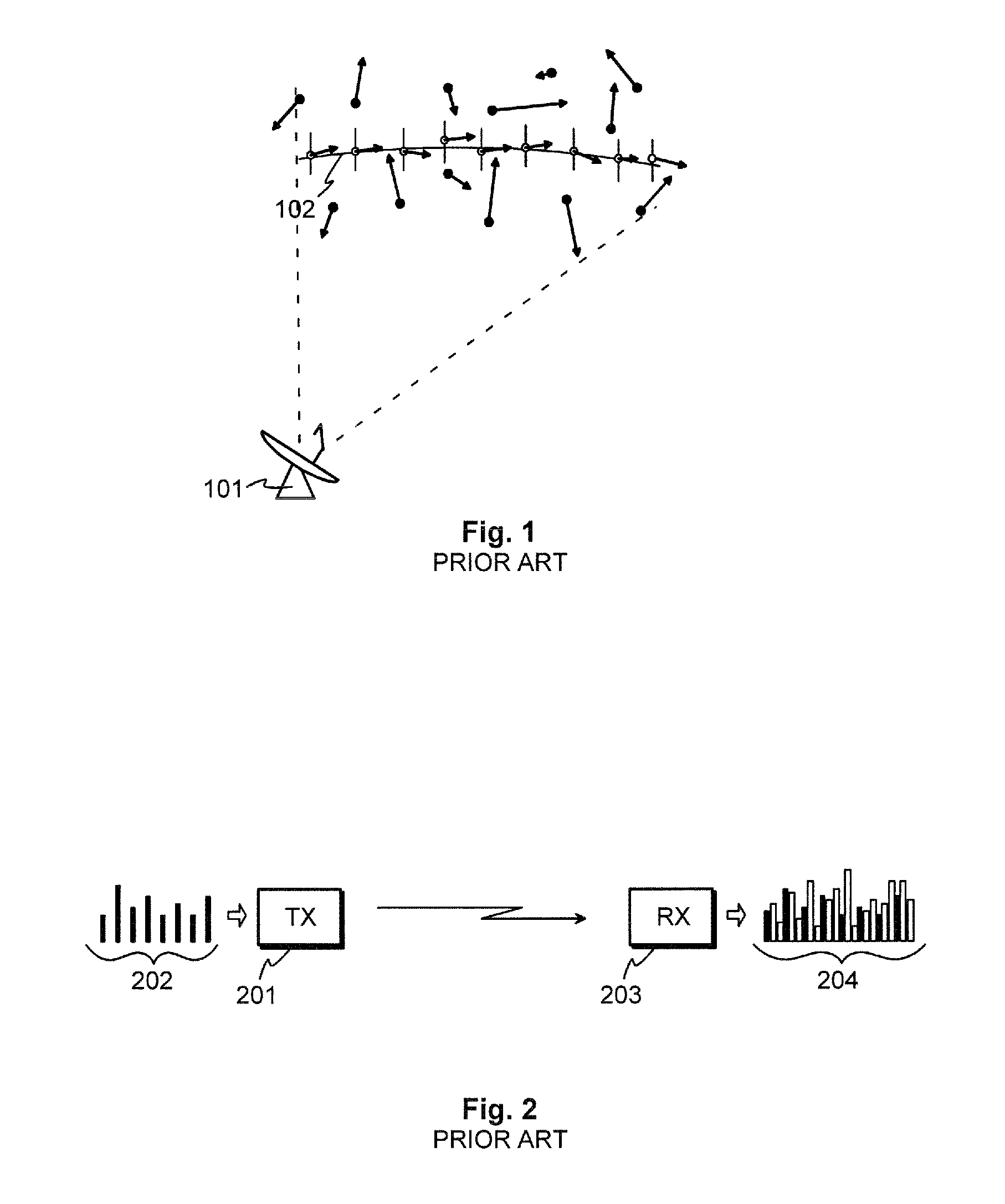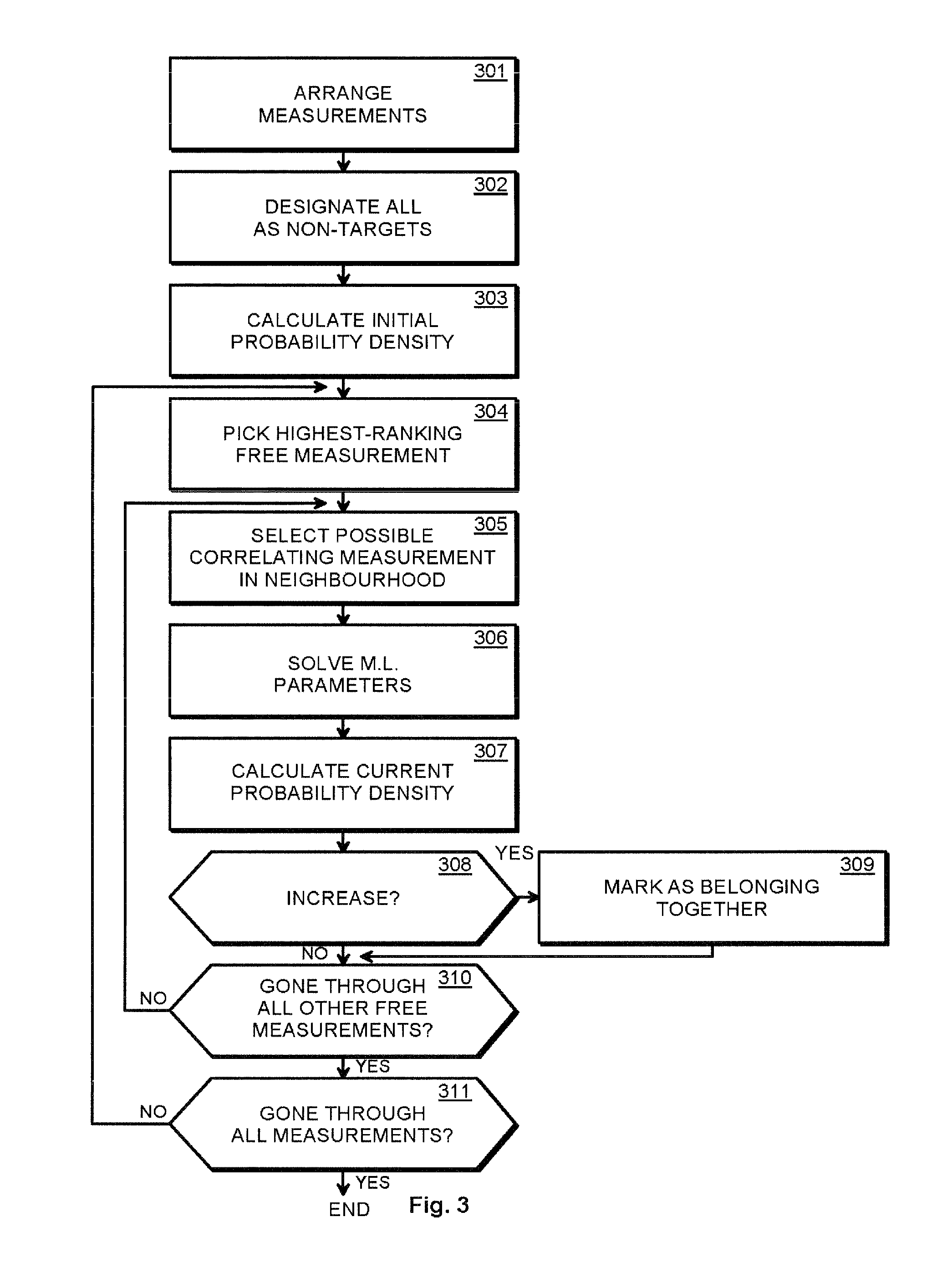Methods and arrangements for detecting weak signals
a technology of weak signals and methods, applied in the direction of transmission monitoring, instruments, and reradiation, can solve the problems of energy levels associated with the desired signal, the output of the reception stage will always contain also unwanted signal components, and the receiver will simultaneously receive unwanted signals
- Summary
- Abstract
- Description
- Claims
- Application Information
AI Technical Summary
Benefits of technology
Problems solved by technology
Method used
Image
Examples
Embodiment Construction
[0047]An embodiment of the invention will be discussed in the framework of space debris investigations made with the EISCAT (European Incoherent Scatter Radar) radar equipment.
[0048]Combining multiple detections of a moving target into one unified description of the target in terms of trajectory is a fairly common problem in radar and telescopic measurements. A wide variety of methods exists for solving this problem, but these are mostly optimized for on-line analysis of air traffic control radars with low false detection rates.
[0049]We take a different approach to the problem by inspecting the global probability density of all measurements using the Bayesian framework, avoiding many heuristic processing steps and simplifying the problem. We also give one possible algorithm that can be used to search for the maxima of the probability density—or in this case, the set of targets and their trajectories.
[0050]The current space debris analysis used for EISCAT measurements is a three-step...
PUM
 Login to View More
Login to View More Abstract
Description
Claims
Application Information
 Login to View More
Login to View More - R&D
- Intellectual Property
- Life Sciences
- Materials
- Tech Scout
- Unparalleled Data Quality
- Higher Quality Content
- 60% Fewer Hallucinations
Browse by: Latest US Patents, China's latest patents, Technical Efficacy Thesaurus, Application Domain, Technology Topic, Popular Technical Reports.
© 2025 PatSnap. All rights reserved.Legal|Privacy policy|Modern Slavery Act Transparency Statement|Sitemap|About US| Contact US: help@patsnap.com



